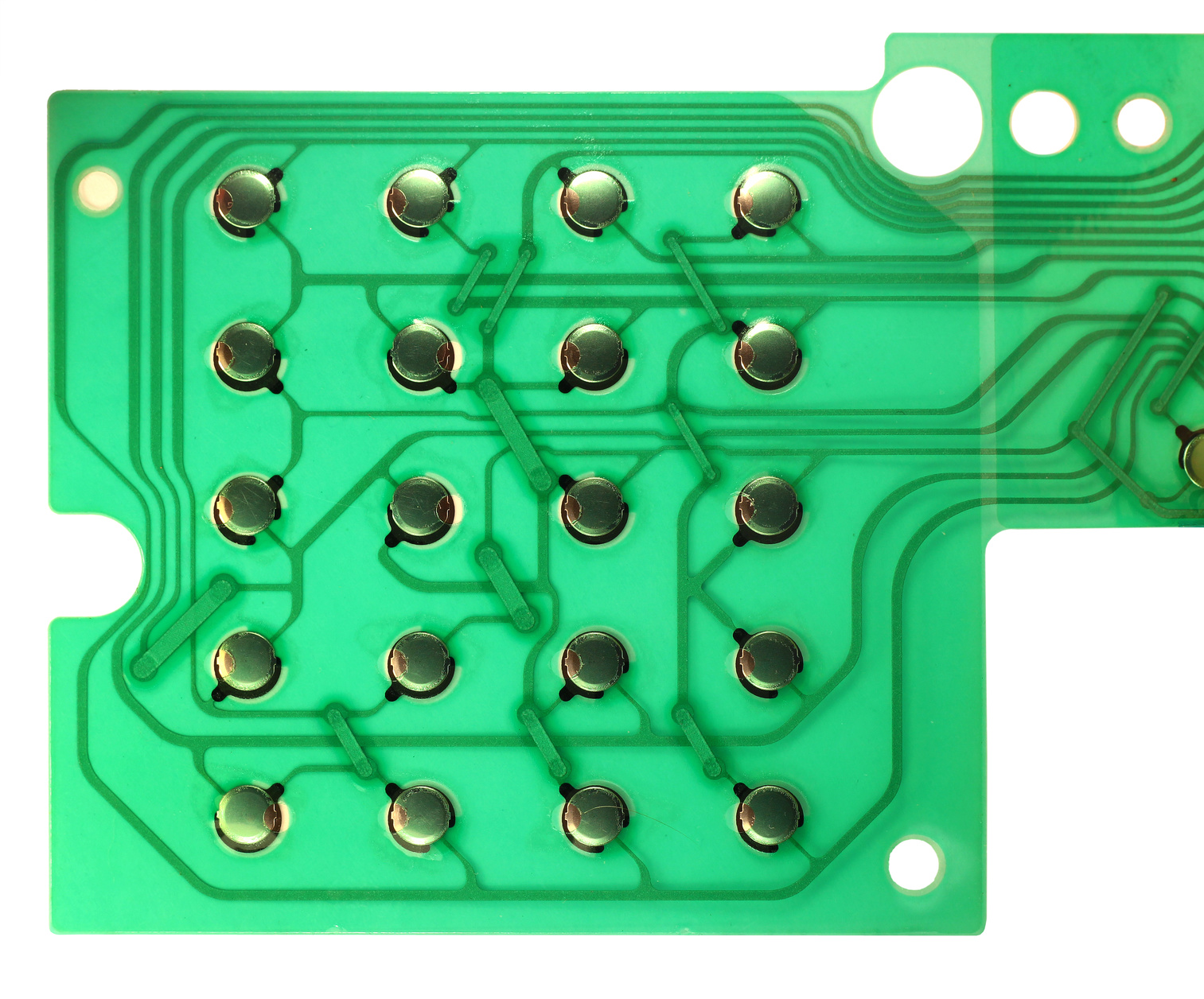Everything About Membrane Layer Switch: Recognizing Its Layout and Performance
When you believe about the control user interfaces in modern tools, membrane switches typically come to mind. These components are greater than simply switches; they mix style and performance perfectly. Understanding how they function and what makes them effective can alter your viewpoint on day-to-day electronics. But, there are subtleties to their design and efficiency that you may not know. Allow's explore what sets membrane layer switches over besides various other control systems.
What Are Membrane Switches?

Their seamless nature makes them easy to clean and resistant to dust and moisture, an essential attribute in lots of environments. Membrane layer switches can also be personalized regarding shape, size, and graphics, allowing suppliers to create special interfaces tailored to particular items. Plus, they're lightweight and slim, which aids in minimizing the overall bulk of gadgets. On the whole, membrane switches play a significant duty in boosting individual experience across a large array of applications.
Just How Membrane Layer Switches Work
When you push a secret on a membrane button, it triggers a straightforward yet reliable system. The leading layer, frequently constructed from flexible product, pushes down onto a conductive layer below it. This action bridges the gap between conductive traces, completing an electric circuit. As quickly as the circuit shuts, it sends a signal to the gadget's controller, which interprets your input.
You'll observe that the tactile feedback varies based upon the button design, supplying either a soft click or an extra pronounced feedback. Once you launch the secret, the membrane returns to its original placement, resuming the circuit and stopping the signal. This procedure happens virtually instantaneously, ensuring a receptive individual experience.
Membrane layer buttons are preferred as a result of their sturdiness and resistance to dust and dampness, making them ideal for different applications, from family devices to clinical tools. Understanding this procedure helps you value their extensive use.
Key Components of Membrane Layer Switches
Recognizing the key elements of membrane layer switches is basic for realizing their functionality and style. The safety layer shields against environmental aspects and wear, extending the button's lifespan. By comprehending these parts, you'll obtain understanding right into how membrane changes operate and their value in various applications.
Products Utilized in Membrane Switch Over Design
The efficiency and toughness of membrane switches over heavily depend on the products made use of in their layout. You commonly encounter polyester and polycarbonate as key substrates as a result of their exceptional strength and adaptability. These materials withstand scratches and chemicals, making them excellent for demanding atmospheres.
The conductive layers commonly use silver or carbon, picked for their dependability and conductivity. membrane switch manufacturer. Silver provides premium efficiency, while carbon is an affordable alternative. For the overlay, you could take into consideration a matte or shiny coating, depending upon your visual needs and customer experience
Adhesives play a vital role too; they bond layers safely and guarantee durability. Make sure to pick adhesives that endure environmental aspects like temperature and humidity. Lastly, do not ignore the value of a good printing strategy for graphics, as it boosts both functionality and visual allure. Selecting the appropriate materials will certainly ensure your membrane switch stands the test of time.
Style Factors To Consider for Membrane Switches
While developing membrane layer switches, it's vital to take right into account numerous aspects that affect their performance and user experience. Beginning by concentrating on the design and button dimension; ensure they're intuitive and easy to navigate. Take into consideration the tactile responses you intend to provide-- will customers require an obvious click or a softer touch? Furthermore, think concerning the products you'll make use of, as they'll affect toughness and aesthetic appeals.
Don't forget the visuals design; clear labeling and color contrast are considerable for exposure. Confirm your style fits environmental variables, like moisture or temperature variants, which can affect efficiency. Remember the importance of screening prototypes with actual customers to gather feedback and make needed adjustments. This repetitive process helps you fine-tune the design, validating it satisfies both useful and aesthetic demands Click Here successfully. By meticulously thinking about these components, you'll produce a membrane switch that boosts use and fulfillment.
Applications of Membrane Layer Switches
Membrane layer switches are flexible elements found in different applications, from industrial devices to customer electronics. You'll see their effect in machines that call for sturdy user interfaces and in tools that benefit from smooth designs. Understanding these applications helps you appreciate the performance and functionality of membrane switches in daily technology.
Industrial Equipment Usage
When you're looking to enhance the performance of commercial equipment, membrane layer buttons provide a reputable solution that incorporates longevity with user-friendly style. These buttons are excellent for severe atmospheres, providing resistance to dust, dampness, and chemicals. Embrace membrane layer switches to streamline your operations and boost overall performance.
Customer Electronics Combination
In the domain name of customer electronic devices, membrane layer switches play an important function in improving customer interaction and tool performance. You'll discover them in devices like microwaves, remotes, and video gaming consoles, offering a seamless means to connect with modern technology. Their streamlined layout permits for simple assimilation into different products, making controls intuitive and easy to use. With their capability to integrate graphics and backlighting, you can enjoy a modern-day aesthetic that complements the tool's overall look. Membrane layer switches also guarantee resilience and resistance to dust and moisture, prolonging the lifespan of your electronics. By selecting membrane switches, you improve not simply the performance however additionally the style of your gadgets, making everyday communications smooth and satisfying.
Benefits and Disadvantages of Membrane Layer Buttons
While membrane switches provide a series of benefits, they additionally include some drawbacks that you should take into consideration. my response One significant benefit is their compact design, making them suitable for space-constrained applications. They're likewise economical, giving a long lasting option with a reduced production expense. Additionally, their smooth surface is easy to clean, enhancing health in atmospheres like hospitals.

Membrane layer buttons can have a shorter life-span compared to mechanical switches, specifically under heavy usage. They can likewise be much less tactile, which might impact user feedback during operation. Balancing these pros and cons will certainly aid you figure out if membrane switches are the ideal fit for your project.
Often Asked Questions
For How Long Do Membrane Switches Over Generally Last?
Membrane switches over normally last in between 5 to one decade, relying on usage and ecological conditions. You'll intend to evaluate variables like wear, exposure to wetness, and temperature level variations to assess their durability effectively.
Can Membrane Switches Be Personalized for Specific Designs?
Yes, you can personalize membrane layer buttons to fit certain layouts (membrane switch manufacturer). You'll have the flexibility to choose shades, shapes, and layouts that match your job's requirements, ensuring they mix seamlessly with your total visual
What Is the Cost Variety for Membrane Change Production?
The expense array for membrane layer switch manufacturing usually falls in their explanation between $1 and $10 each, relying on elements like design intricacy, quantity, and products. You can get quotes from makers to find the very best alternative.

Are Membrane Switches Water-proof or Immune?
Membrane layer buttons can be developed to be water-proof or immune, depending on products used and construction techniques. If you need them for wet atmospheres, guarantee you specify those demands throughout the design process.
How Do Membrane Layer Switches Contrast to Typical Switches?
Membrane switches are generally thinner and much more flexible than typical switches, supplying a sleek layout. They're frequently much easier to clean up and integrate, yet could not give the responsive feedback you're utilized to with mechanical alternatives.
Verdict
